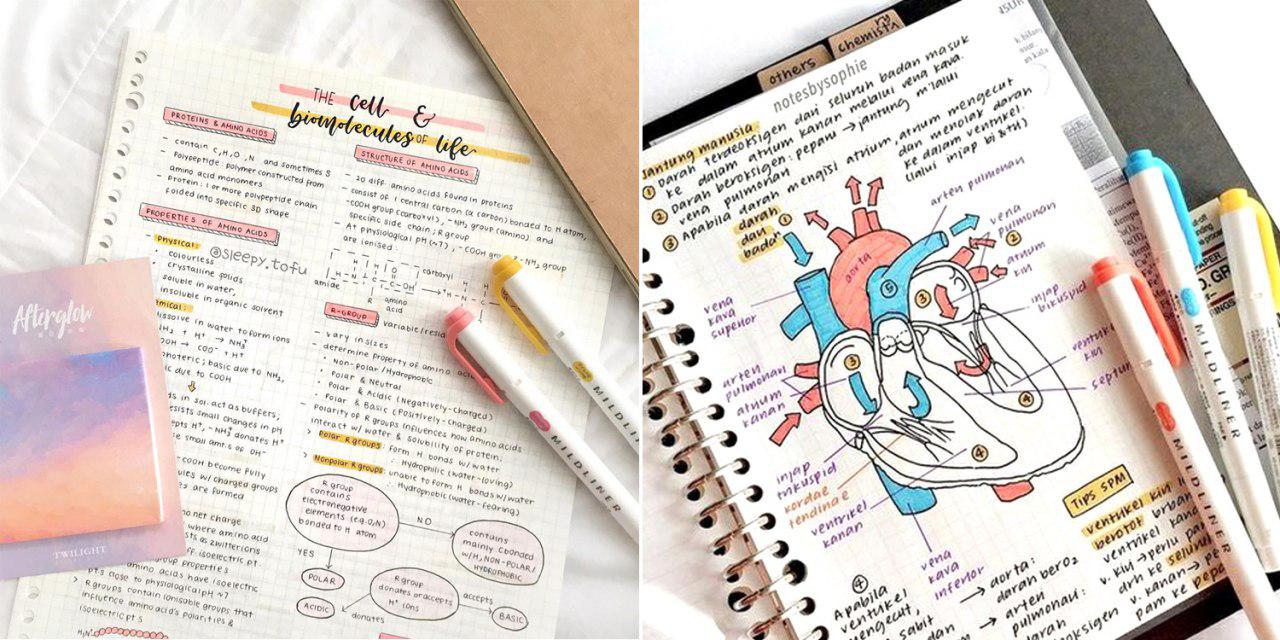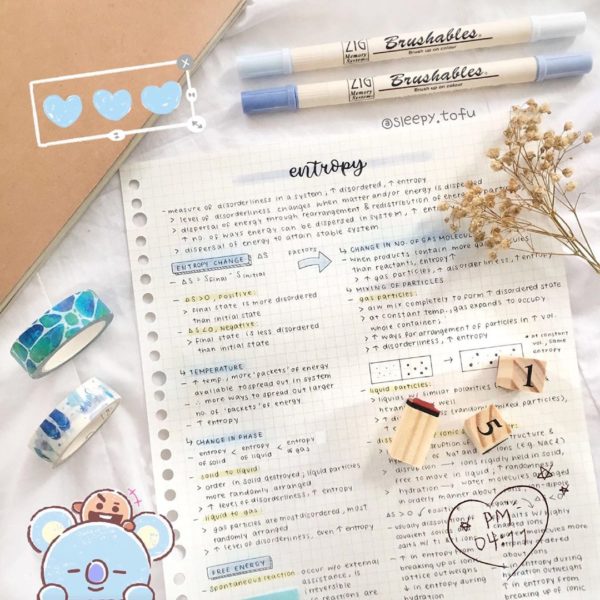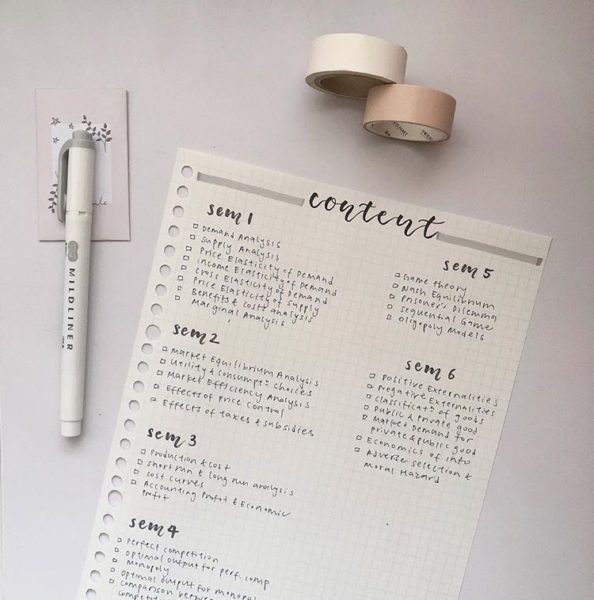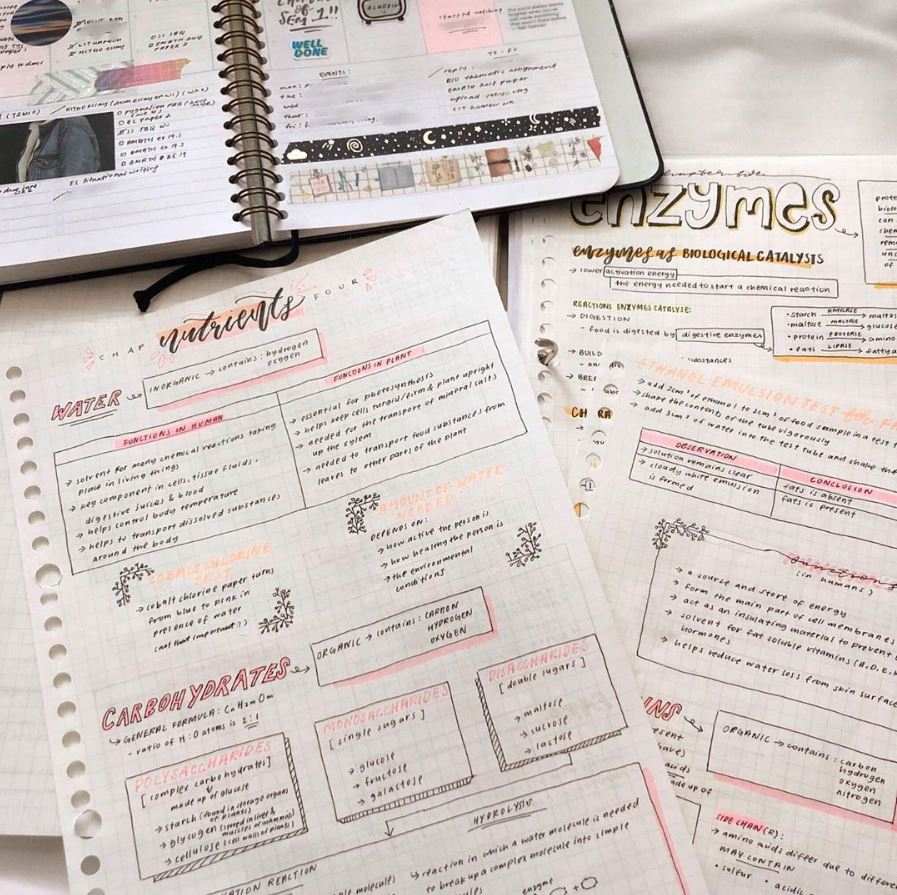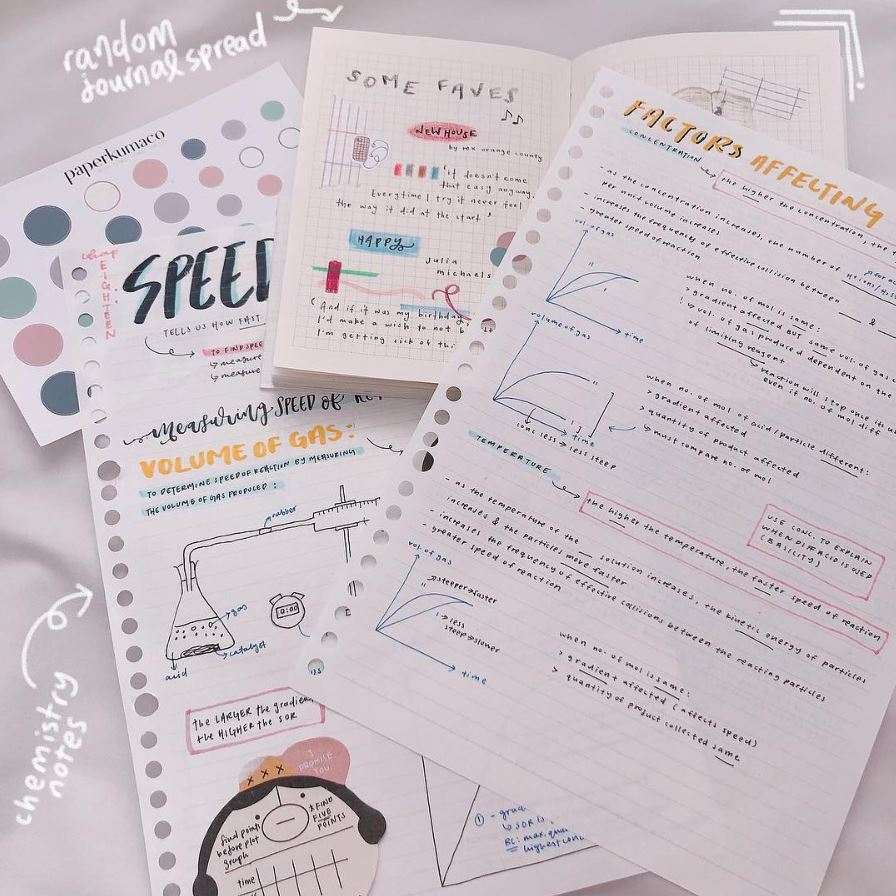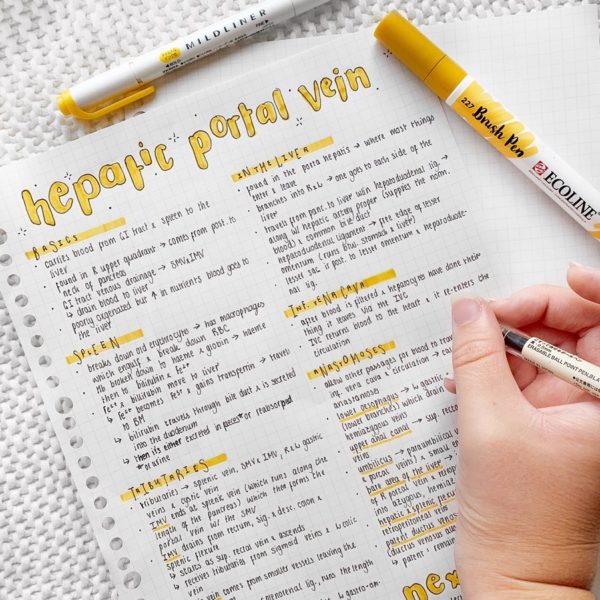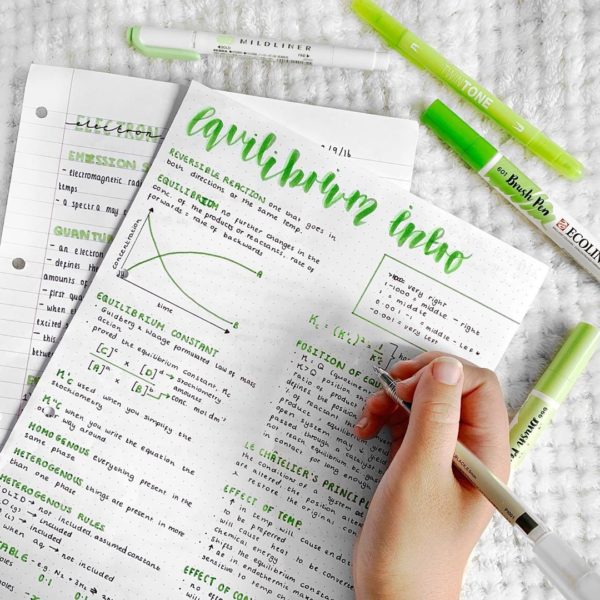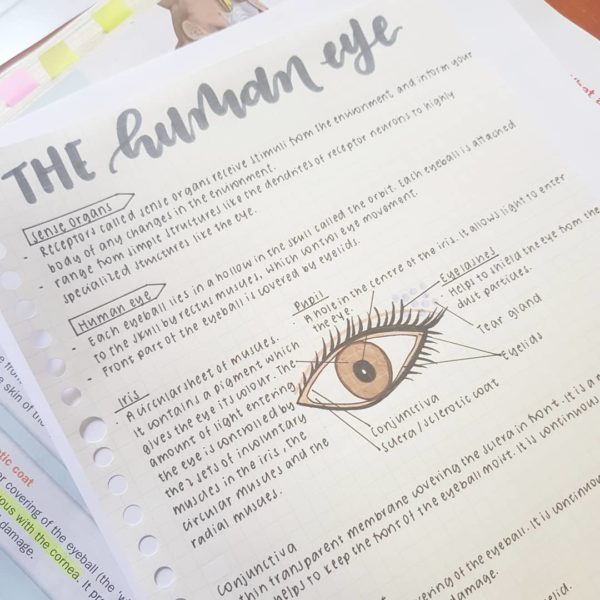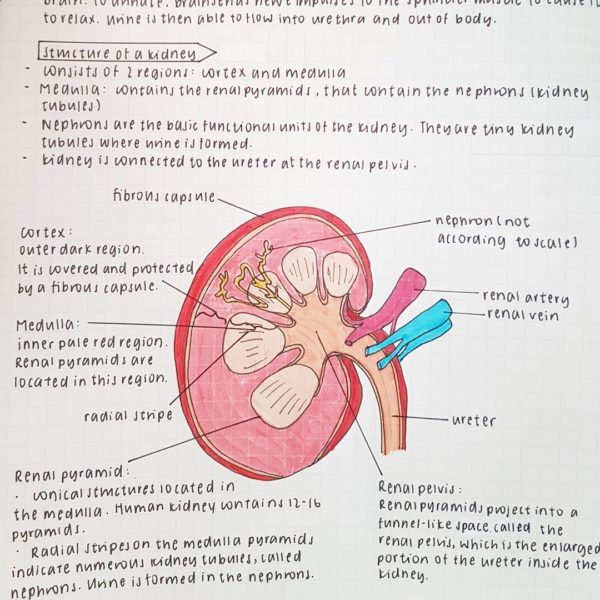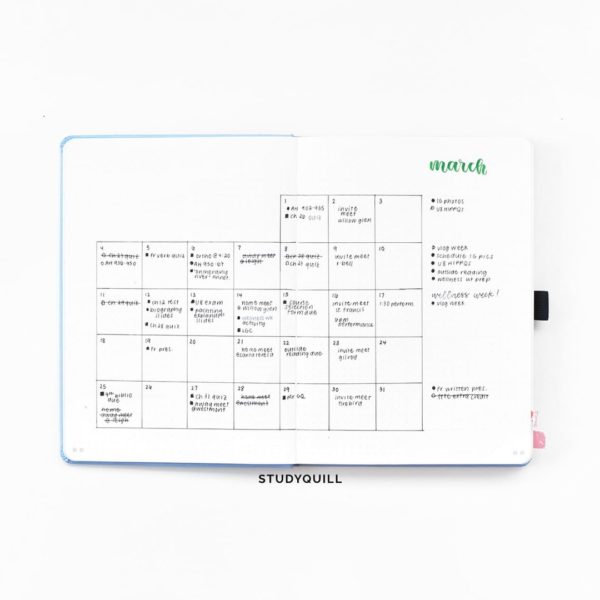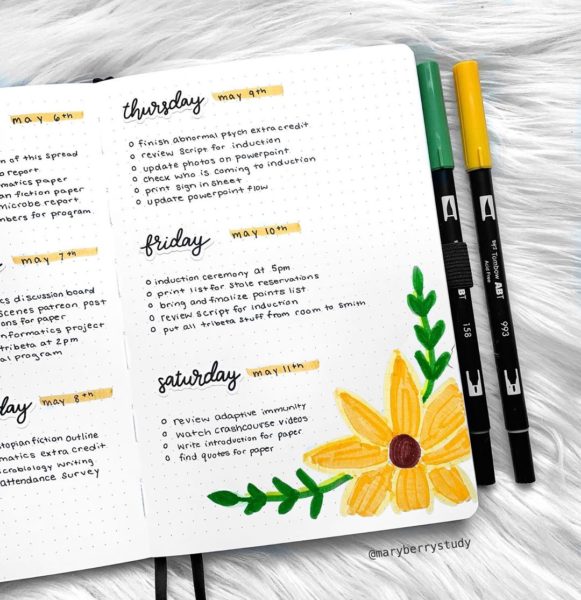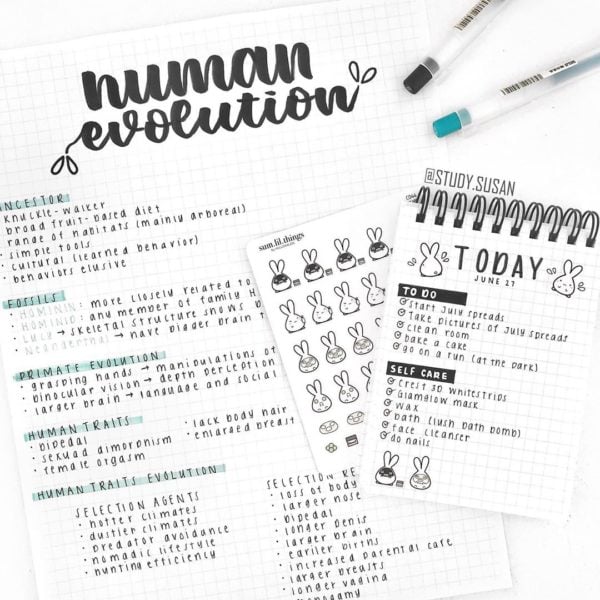Studygram Teaches Singaporean Students Simple Techniques To Stylise Notes
With the exams around the corner, it’s time to get down to business.
If making notes helps you study better, doing this doesn’t have to be a chore. After all, let’s leave the black and white to textbooks, and treat notes as empty canvases ready for us to unleash our creative juices.
Who’d ever thought that study notes can look pretty and Instagrammable while being highly practical as well? That’s where we welcome to the world of “Studygram”.
Studygrams – study accounts on Instagram – are a carousel of helpful resources decked with colours, calligraphy, cute stickers, and doodles.
Here’s 5 techniques you can grasp if you’re keen to make a Studygram with your own stylised notes.
1. Studygram notes start with a table of contents
As simple as this may seem, many people skip writing down the table of contents in their notes.
However, we feel that it is one of the most important things to do when doing your notes.
They not only act as a guide for you to locate topics, but they also act as a checklist to see if you have missed out on any chapters.
To make it aesthetic, you can add stickers, draw and even add polaroids to empty spaces.
2. Calligraphy to spruce up dry study notes
Writing in the same handwriting can be pretty boring to look at. However, Studygrams have shown that with varying styles of writing, your notes can be pretty darn chio to look at.
For example, you can write the title of your chosen topic in cursive script or block words to make them stand out from the rest of the text.
This will definitely help you during your revision and examinations, especially when you’re in a rush to find a certain topic.
3. Use highlighters to draw over more important points
Our eyes generally focus on things that stand out, which is why you should make use of trusty highlighters when doing your notes.
By using highlighters, you can capture your own attention by marking down keywords with your favourite colour.
You can use them to highlight subheads or colour-code certain keywords.
Pro-tip: You can create a legend page that shows the purpose of the various colours you have used. This will help you as a reference in case you forget.
4. Sketch for better visuals
Remembering information can be quite hard if they’re all only in words. So why not draw them out and label them directly?
By drawing out diagrams and images, you can easily remember and visualise various parts of a subject.
For example, @Studyscript on Instagram draws out an eye and labels the various parts of it as well as the various functions.
Here is another example where she labels the parts of a kidney and their functions.
5. Draw tables to organise content
Using tables to organise content is simple and efficient. It allows you to keep things separated and neat.
For example, you can put your mathematical formulas in the table for a specific chapter so that they won’t be all over the place.
Pro-tip: You can shade a box using a pastel colour highlighter to denote that that specific box contains important information.
6. Keep a timeline for things you need to do
Planning what to study for and when you should do it is important as it ensures that you dedicate time to doing your notes.
You can simply write down the days and add bullet points below them. Then, just check off the things you need to do once you have completed them.
You can even doodle on the pages to make it more vibrant.
Personalise your own notes
The tips above are just a basic guide to ensuring your notes are useful, aesthetically pleasing and o course, worthy of your very own Studygram.
You explore the basics and come up with your own creative style that will benefit you when hitting the books.
Which one of the tips above will you be using for your notes? Let us know in the comments below.
Featured image from Instagram and Instagram.
